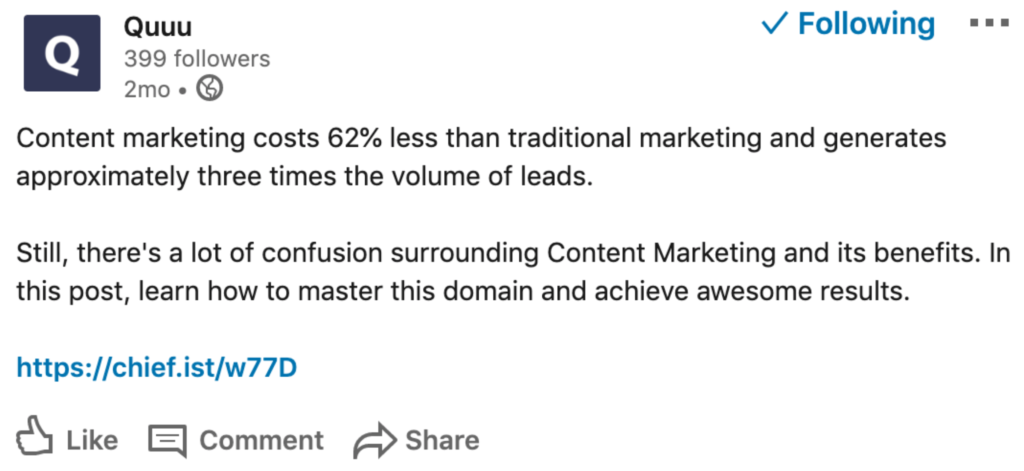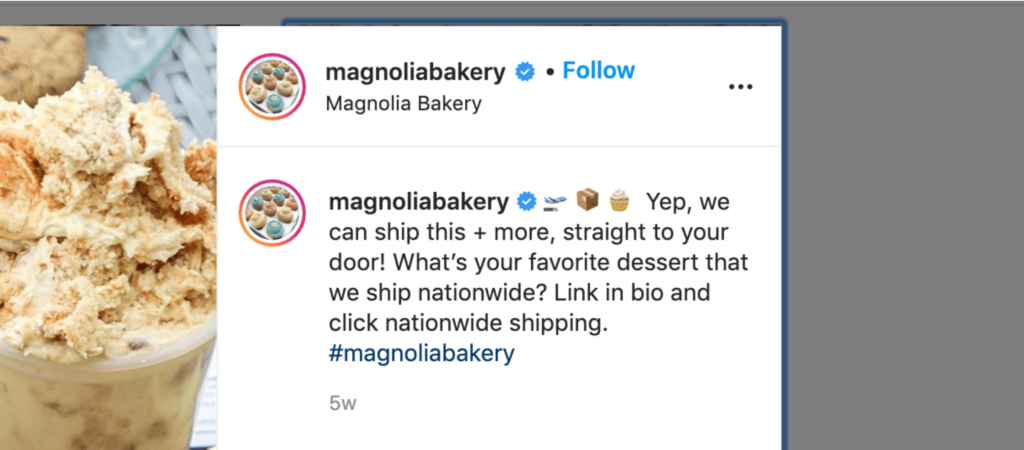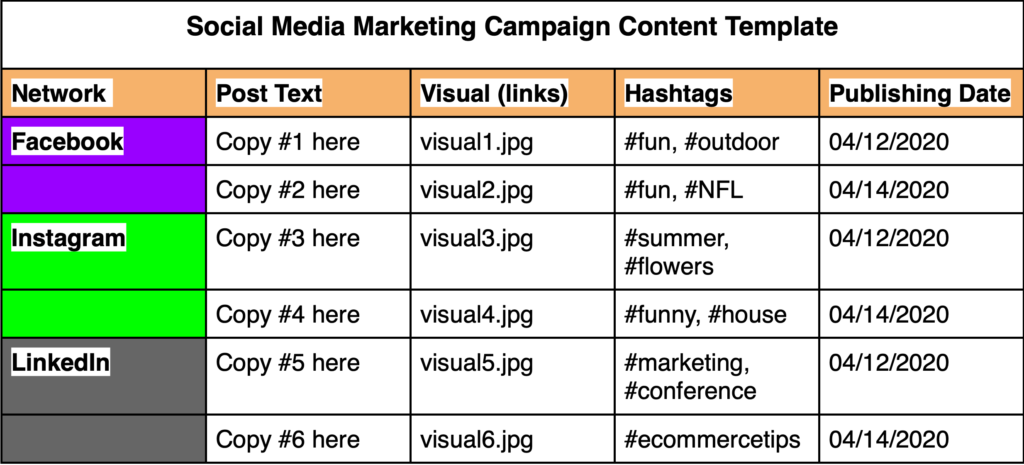Don’t know where to start with writing a social media marketing campaign?
Don’t worry, you’re not alone.
Many people feel overwhelmed writing for social media because it’s not as simple as it used to be. Gone are the days when you could write almost anything, add a visual or a link to it, and get decent results.
But don’t worry, writing high-performing social media content still doesn’t have to be daunting. Not every post you make has to reinvent the marketing copywriting wheel, so if you follow the best practices, you’ll have a great chance to hit your conversion goals.
If you’re up for it, let me walk you through the six best tactics to engage your social media followers in this post.
By the time you’re done reading, you’ll feel much more confident that your social media campaign content will convert nicely.
1. Create a Buyer Persona out of Your Target Audience
Writing social media post content seems like a simple task. Think of an idea to describe the topic, write it, and share it with your followers.
Not a big deal, right?
Yes, that’s why many do it without paying too much attention to customer research.
But not you.
If you don’t know who you’re writing for, the content won’t be relevant, and the campaign will fail. To avoid that, you need a buyer persona.
It’s a fictional representation of your ideal social media follower and customer, based on research and validated data about the existing customer base.
It defines how you write texts for all posts in your social media marketing campaign.
The success of your campaign pivots on the accuracy of the persona, so you need to do your best to research your audience thoroughly.
A typical buyer persona contains:
- demographics (age, gender, location, etc.)
- main goals for being on social media (communicating with friends, reading news, following brands and influencers, stay updated about brand news, sales, or contests, etc.)
- content types they are most interested in (videos, photos, case studies, interviews, product reviews, podcasts, etc.)
- types of social media influencers they typically follow, e.g. local micro influencers in travel, fashion, and health niches).
The best places to get this information are your contact database, customer surveys, interviews, newsletter subscribers’ details, and Google Analytics audience data.
Try to create multiple personas to have more room for creativity with content.
Dive Deeper: Buyer Personas: Boost Conversions Using Psychological Profiles.
2. Write in The Expected Style and Tone
Your brand probably has a unique style of communication with followers on social media.
It could be playful, serious, neutral, or whatever you want it to be (as long as it’s appropriate and aligned with your values).
You need to combine your brand marketing style and tone with the ones preferred by a specific social media network. If you’re unsure about what style and tone to use for your campaign, here are my recommendations.
For Facebook, you want to write in a friendly, conversational tone.
Be quick, mention the value for the customer, and give a link to your website. If needed, include a call to action.
This post from Costa Coffee does exactly that.

Tips for writing Facebook posts:
- try making every post about the customers. Focus on the benefits for customers because they care about what you can do for them
- mention the key value of the post/ad in the first sentence. It has the best chance to attract the attention of viewers
- consider asking a question in the first sentence. This also might help with getting the viewer’s attention hooked.
For LinkedIn, you want a neutral tone and something that has immediate value. This could be a statistic, a business tip, or a quote.
In this post, for example, Quuu uses a stat that’s relevant to their target audience – digital marketing professionals. It serves as an “attention hook.”

Including the “hook” in the first sentence is a common technique for attracting the attention of viewers.
For Instagram, the lighthearted, positive, and friendly tone is a must.
This means:
- writing in a simple, conversational language
- using emojis
- keeping it brief (under 125 characters)
- asking a question where appropriate.
Here’s a great example of how to nail that writing, courtesy of Magnolia Bakery.

Users of each social media network expect brands to communicate with them this way.
Try combining your brand’s communication style with the recommendations for social media for the best results. If you need professional writing advice, TopEssayWriting, Grammarly, Classyessay, and BestEssaysEducation are top places to get it.
The most important thing for every social media campaign is to stay focused on the value for customers. You can’t win them over with product talk alone, so write every tweet and post with this in mind.
3. Share Trendy and Popular Content Regularly
Finding a nice balance and split of content for your social media strategy is imperative. This means not just talking about your own product and advice, but also sharing trending topics on Twitter by jumping on popular hashtags and getting involved with joining trending conversations.
So, leave some space for content that’s relevant and popular at the moment. This is often called “trendy” content, and it could give a great chance to get a major engagement boost.
For example, let’s say that something exciting occurs in your industry.
Let’s suppose an exciting startup has become a multi-billion unicorn, and everyone is talking about it. There are lots of articles about that success everywhere, so the buzz is serious.
You have two options:
- react by congratulating them in a post
- congratulate them in a special post and add some more value to followers with your own commentary.
The second option is better because it can help with showing off your expert skills and keeping you engaged with the online community.
It’s one of the very best content curation strategies: collecting popular content and adding your own commentary to make it more useful for your target audience.
And the best news is that you don’t have to spend hours looking for trendy and popular content. You can use a content curation tool like Quuu to ensure that your content is all evergreen, up to date and relevant, it’ll just get posted to your social media automatically – easy!
Dive Deeper: Content Curation for Social Media: the Ultimate Guide for 2020.
4. Create Social Media Campaign Ideas That Makes Sense to Use on a Specific Social Network
In tip #2, we talked about writing in the tone and style that people expect.
This time, we’re going to ensure that your campaign presents your products or services in a way that users of a certain social media network expect.
As we know, people use social media networks for different purposes.
Facebook is like a big family gathering where everyone is sharing their photos and exchanging thoughts about life.
On LinkedIn, people are mostly interested in something that can help them with their professional careers.
Instagram is where they search for products and share the photos from exciting events.
To make your campaign messaging sound consistent with a social media network’s style, consider these tips:
- Facebook: share behind-the-scenes content, employee testimonials, exciting news about the company, and the information about environmentally conscious projects
- LinkedIn: share case studies, professional tips, interviews with decision-makers and business leaders, product reviews,
- Instagram: share product images, videos, reviews, contests, tutorials, and news about your brand, mission, vision, social responsibility projects, etc.
By choosing the appropriate content types for each social media network, you will be able to describe your value proposition in a way that meets the needs of potential customers using that platform.
Dive Deeper: 20 Social Media Content Ideas for 2020.
5. Use a Social Media Campaign Template to Organize Content
Melanie Sovann, a senior social media marketer from GrabMyEssay: “Having a documented and neatly organized content for a social media marketing campaign isn’t only a good way to be updated but also stay consistent while implementing it.”
That’s why you need a campaign content template to write in and store your posts.
Here’s how it can look.

Remember that being organized and posting content at peak engagement times are major precursors for the success of your social media marketing campaign.
That’s why try using a template like this to organize and store every post. It’ll help you to reduce the stress of planning and implementation.
Besides, it allows sharing all details with everyone easily, so it’d be easier to keep everyone updated on your social media marketing strategy.
6. Always Monitor Campaign Engagement
You need the best-performing content for your campaigns, right?
To use it in the future, you need to know what it is.
This means you should track the performance of the social media marketing campaign to find what got you the most views, impressions, and conversions.
One way to do it is to use social media tools: Facebook Analytics, Twitter Analytics, and LinkedIn Analytics.
Each of those gives insights into the performance of your page and content with useful engagement stats.
Use these analytics to monitor how successful your content at engaging your audience.
Another important thing to keep in mind is the monetary return of your investment. To know it, you need to measure the ROI of your campaigns.
Dive Deeper: Measuring the ROI of Your Social Media Marketing Strategy – A Quick Guide.
Time to Experiment
Okay, that’s enough theory for you. Feeling more confident about writing your next campaign?
Now that you’re familiar with the science of creating winning content for a social media marketing campaign, it’s time to do some experimenting.
Bookmark this post and use the tips you’ve just read to write better campaign posts to fill your all-important social media channels. Here’s to you achieving your business goals!






